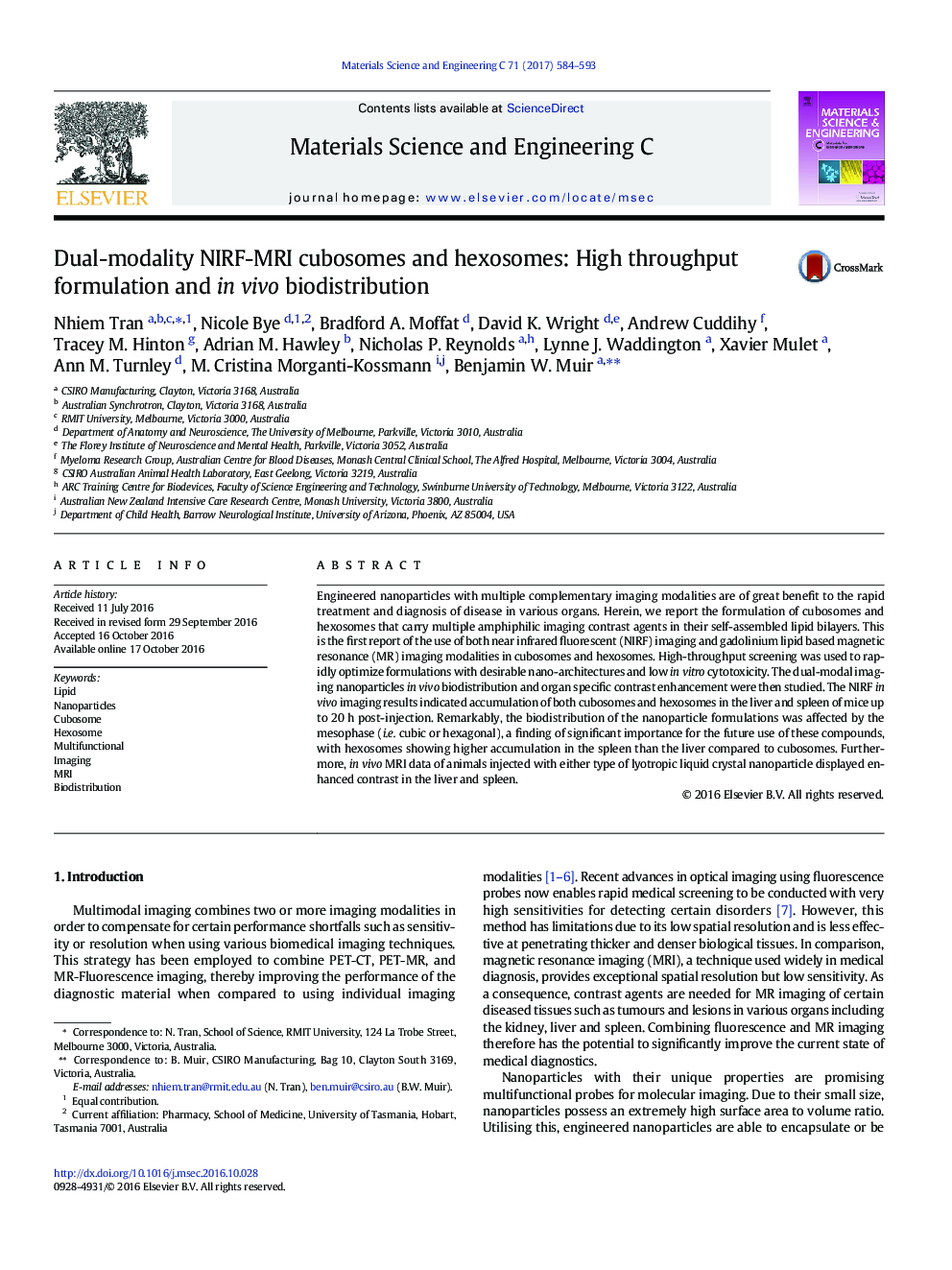| Article ID | Journal | Published Year | Pages | File Type |
|---|---|---|---|---|
| 5434664 | Materials Science and Engineering: C | 2017 | 10 Pages |
â¢Dual modality NIRF-MR imaging self-assembled lipid nanoparticles were formulated.â¢The nanoparticles showed cubic and hexagonal internal nanostructures.â¢Biodistribution experiments revealed accumulation of both cubosomes and hexosomes in spleen and liver of mice.â¢Pre-clinical MRI displayed enhanced contrast in spleen and liver of mice that received either cubosomes or hexosomes.
Engineered nanoparticles with multiple complementary imaging modalities are of great benefit to the rapid treatment and diagnosis of disease in various organs. Herein, we report the formulation of cubosomes and hexosomes that carry multiple amphiphilic imaging contrast agents in their self-assembled lipid bilayers. This is the first report of the use of both near infrared fluorescent (NIRF) imaging and gadolinium lipid based magnetic resonance (MR) imaging modalities in cubosomes and hexosomes. High-throughput screening was used to rapidly optimize formulations with desirable nano-architectures and low in vitro cytotoxicity. The dual-modal imaging nanoparticles in vivo biodistribution and organ specific contrast enhancement were then studied. The NIRF in vivo imaging results indicated accumulation of both cubosomes and hexosomes in the liver and spleen of mice up to 20Â h post-injection. Remarkably, the biodistribution of the nanoparticle formulations was affected by the mesophase (i.e. cubic or hexagonal), a finding of significant importance for the future use of these compounds, with hexosomes showing higher accumulation in the spleen than the liver compared to cubosomes. Furthermore, in vivo MRI data of animals injected with either type of lyotropic liquid crystal nanoparticle displayed enhanced contrast in the liver and spleen.
